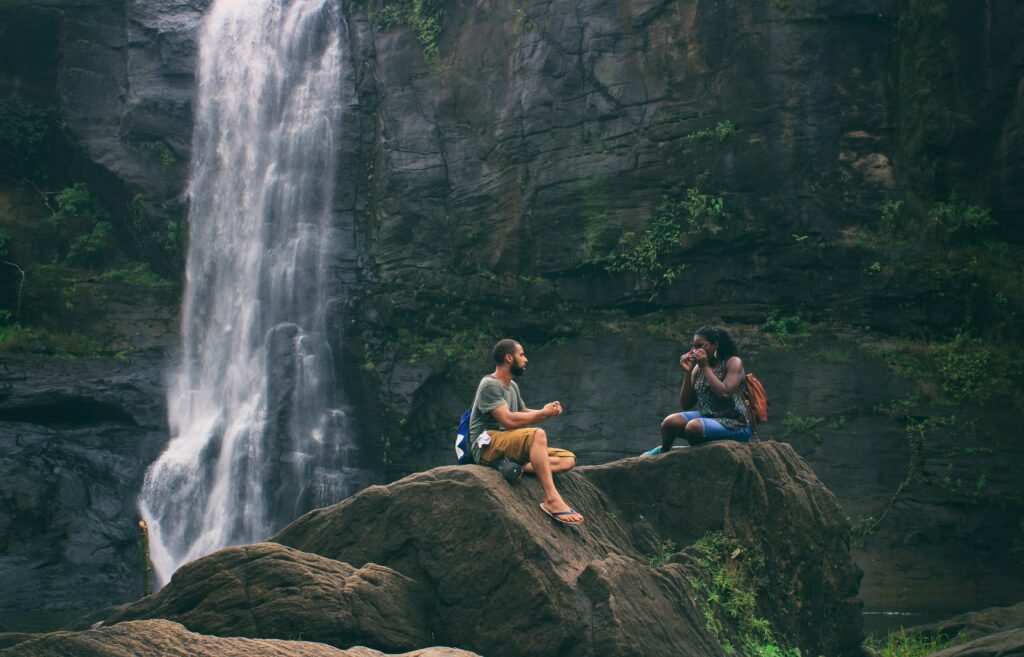If you’re dreaming of a well-paying job that lets you explore the world and embrace travel and adventure, becoming a professional travel blogger is an excellent choice. However, starting a blog from scratch can be challenging and time-consuming without the right approach. This article provides a step-by-step guide on how to start a travel and adventure blog website—from researching your niche to making money blogging. We will explore each step in-depth, offer practical travel and adventure blogging tips, and answer frequently asked questions to help you on your gadventure.
Step-by-Step Guide
- Research Your Niche
- Come Up With a Memorable Blog Name
- Pick a Blogging Platform
- WordPress
- Hostinger Website Builder
- Set Up Web Hosting
- Customize Your Travel Blog
- Establish Your Branding
- Pick a Theme for Your Travel Blog
- Create a Logo and a Slogan
- Design Your Travel Blog
- Install the Necessary Plugins
- Set Up the Pages
- Publish Your First Blog Posts
- Determine the Blog Topic
- Write High-Quality Content
- Set Up Scheduled Post Publishing
- Promote and Grow Your Audience
- Connect to Google Analytics
- Make Money With Your Travel Blog
1. Research Your Niche The first step in building a successful blog is finding the right niche. This will give your website a distinctive identity, helping it stand out in the crowded travel and adventure blogging community. If you’re unsure where to start, here are some travel and adventure blogging niche ideas:
- Budget Traveling: Write articles about affordable travel gear and accommodations for readers who want to explore on a budget.
- Luxury Traveling: Review exotic destinations and share exclusive travel tips for those seeking lavish experiences.
- Family-Friendly Traveling: Recommend kid-friendly itineraries and destinations for families.
- Solo Traveling: Offer tips and tricks for making new friends and staying safe during solo trips.
After choosing a niche, research your target audience to understand their pain points and goals. This way, you can create content that attracts visitors with shared interests and build a loyal reader base. Consistently writing about a specific topic is also great for search engine optimization (SEO). This signals your site’s expertise, helping it climb the rankings for related keywords. The higher the travel and adventure blog ranks, the more traffic it will acquire.
2. Come Up With a Memorable Blog Name A memorable blog name is one of the first things readers notice when visiting your site, making it crucial for a positive first impression. A good blog name attracts interest and informs visitors about the site’s niche. For example, if your blog is named “Visit Maldives,” people will expect travel tips and recommendations for this exotic island.
Follow these best practices to find a suitable travel and adventure blog name:
- Brainstorm Relevant Words: List words related to your travel and adventure blogging niche. For instance, family-friendly travel blogs might use terms like “kids,” “babies,” “parents,” and “fun.”
- Use Name Generators: Speed up the brainstorming process with blog name generators.
- Consider the Target Audience: Choose a name that reflects the language and style that suit your target audience. A professional blog tone might need a more formal name, while a casual blog can be witty and personal.
- Get Creative: Experiment with unique word combinations and styles. Inject personality and wit into the name if it suits your blog’s tone.
- Make it Simple and Memorable: Avoid complicated words, phrases, characters, and numbers. Aim for a catchy name that people can easily remember.
- Ask for Second Opinions: Pitch several blog name options to your target audience and ask them to choose their favorite.
When brainstorming a blog title, consider the domain name as well. Domain addresses are unique, so make sure to run a quick domain name search to check if your preferred travel and adventure blog name is available. For example, there can only be one awesomesolotrips.com.
3. Pick a Blogging Platform The next step in starting a travel and adventure blog is to choose the best blogging platform. Generally, there are two categories to choose from: a content management system (CMS) and a website builder.
Content Management System (CMS) A CMS is a program that lets users create, manage, and modify website content. WordPress is the most popular CMS, holding about 60% of the market share.
- WordPress: Offers a user-friendly interface and extensive customization options. However, some users may need to familiarize themselves with the WordPress dashboard initially.
Website Builder Website builders often come with a drag-and-drop editor, resulting in a faster learning process.
- Hostinger Website Builder: Enables you to create a blog website in minutes with an intuitive drag-and-drop interface.
Both blogging platforms let you build websites without needing to code, but each has its own strengths and weaknesses. If you’re unsure which one to pick, let’s compare a website builder and WordPress in more detail to help you decide.
Conclusion Successful travel and adventure bloggers explore the world, share their experiences, and attract readers while making money off their content. It’s no wonder many people are interested in becoming one. Although exciting, starting a travel blog can also be intimidating, especially since the industry has become quite saturated. To launch a successful travel and adventure blog, follow these best practices:
- Choose a niche and memorable blog name to establish a strong market positioning.
- Purchase a domain name and sign up for a web hosting service.
- Pick a blogging platform – WordPress or Hostinger Website Builder.
- Determine the blog’s branding identity through a logo, slogan, and consistent visual design.
- Customize the travel and adventure blog by choosing a suitable theme, installing the necessary plugins, and setting up the pages.
- Acquire new readers by publishing blog posts consistently and promoting the site through various platforms, including social media, email, and travel blogging communities.
- Monetize it using affiliate links, ads, sponsored posts, and exclusive content once the travel and adventure blog gains enough traffic.
- Join travel blogging courses to scale the site even further.
Good luck with launching your own travel and adventure blog! We wish you an exciting gadventure ahead. If you have more questions, check out our FAQ below.
How to Start a Travel Blog FAQ
- How Much Does It Cost to Start a Travel Blog?
- How Much Money Can You Make From a Travel Blog?
- How Do Travel Bloggers Get Paid?
- Do You Need Equipment to Become a Travel Blogger?
- How to Start a Travel Blog Without Traveling?


